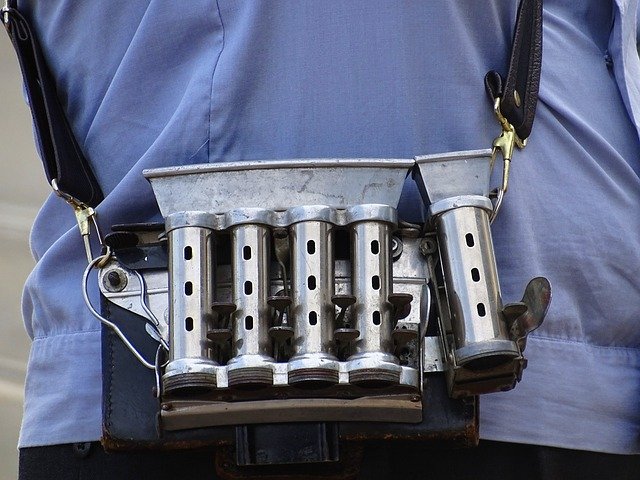Residential Generator Investment: Pricing and Installation Facts
Investing in a residential backup generator provides peace of mind during power outages, but understanding the costs and installation requirements is crucial for homeowners. From whole house systems to portable units, generator prices vary significantly based on fuel type, capacity, and installation complexity. This comprehensive guide examines current market pricing, installation considerations, and factors that influence your total investment in backup power solutions.

Understanding Whole House Generator Systems
Whole house generators, also known as standby generators, automatically activate during power outages to maintain electricity throughout your home. These permanently installed units connect directly to your home’s electrical panel and typically run on natural gas or propane. Unlike portable generators, standby systems require professional installation and electrical work to integrate with your home’s power system.
The capacity of whole house generators ranges from 7.5 kilowatts for smaller homes to 48 kilowatts for larger properties with high electrical demands. Most residential installations fall between 14-22 kilowatts, providing sufficient power for essential appliances, lighting, and HVAC systems during outages.
Factors Affecting Standby Generator Costs
Several variables influence the total cost of a standby generator installation. Generator size represents the primary cost factor, with larger capacity units commanding higher prices. Fuel type also impacts pricing, as natural gas models typically cost more upfront than propane versions but offer lower long-term operating costs.
Installation complexity significantly affects total project costs. Homes requiring extensive electrical work, gas line installation, or concrete pad preparation will incur additional expenses. Local building codes and permit requirements vary by location, adding to overall project costs. Weather conditions and accessibility to installation areas can also influence labor costs and project timelines.
Current Market Pricing for 2025
Standby generator pricing has evolved in 2025, reflecting advances in technology and manufacturing efficiency. Entry-level whole house generators typically start around $3,000 to $5,000 for units in the 10-14 kilowatt range. Mid-range systems offering 16-22 kilowatts generally cost between $4,500 and $8,000. Premium models with advanced features and higher capacity can exceed $10,000.
Installation costs add substantially to the total investment, typically ranging from $3,000 to $8,000 depending on project complexity. Simple installations with existing gas lines and minimal electrical work may cost less, while comprehensive installations requiring new gas service or extensive electrical modifications can exceed these estimates.
| Generator Type | Capacity Range | Equipment Cost | Installation Cost | Total Investment |
|---|---|---|---|---|
| Generac Guardian | 11-24 kW | $3,200-$7,500 | $3,500-$6,000 | $6,700-$13,500 |
| Kohler 14RESAL | 14 kW | $4,800-$5,500 | $3,000-$5,500 | $7,800-$11,000 |
| Briggs & Stratton | 12-20 kW | $3,500-$6,200 | $3,200-$5,800 | $6,700-$12,000 |
| Champion Power | 14-20 kW | $3,000-$5,800 | $3,000-$6,500 | $6,000-$12,300 |
| Cummins QuietConnect | 13-20 kW | $4,200-$7,000 | $3,500-$6,200 | $7,700-$13,200 |
Prices, rates, or cost estimates mentioned in this article are based on the latest available information but may change over time. Independent research is advised before making financial decisions.
Installation Requirements and Considerations
Professional installation ensures safe operation and compliance with local electrical codes. The installation process typically involves several key components: concrete pad preparation, electrical connections to the main panel, gas line installation or modification, and system commissioning. Most installations require permits and inspections, adding time and cost to the project.
Electrical work includes installing an automatic transfer switch, which safely disconnects your home from the utility grid during generator operation. This critical component prevents dangerous back-feeding that could harm utility workers. Gas line work may involve extending existing lines or installing new service, depending on generator location and existing infrastructure.
Maintenance and Operating Costs
Ongoing costs include regular maintenance, fuel consumption during operation, and periodic service requirements. Annual maintenance typically costs $200 to $500, depending on service provider and generator size. Most manufacturers recommend professional service every 200 hours of operation or annually, whichever comes first.
Fuel costs vary by region and usage patterns. Natural gas generators typically offer lower operating costs than propane units, especially during extended outages. However, propane provides fuel security since tanks can be filled in advance of severe weather events when natural gas service might be interrupted.
Making an Informed Investment Decision
Evaluating your backup power needs involves assessing critical electrical loads, budget constraints, and local utility reliability. Consider which appliances and systems require continuous power during outages, such as refrigeration, medical equipment, security systems, and heating or cooling systems. This assessment helps determine appropriate generator capacity and influences total investment requirements.
Financing options are available through many dealers and manufacturers, making whole house generators accessible to more homeowners. Some utility companies offer rebates or incentives for standby generator installation, particularly in areas prone to extended outages. Additionally, generators may qualify for home insurance discounts in regions with frequent severe weather events.




